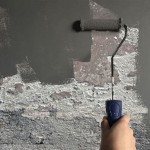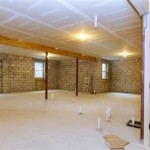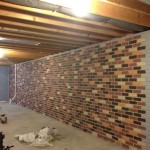Good Humidity Setting For Basement Dehumidifier
If you're dealing with a damp, musty basement, you know how important it is to control the humidity levels. A dehumidifier can be a great way to do this, but only if it's set to the right level. So, what is the good humidity setting for a basement dehumidifier?
The ideal relative humidity (RH) level for a basement is between 30% and 50%. This range is low enough to prevent condensation and mold growth, but high enough to keep the air from feeling too dry and uncomfortable, as low humidity can cause dry skin and irritation.
If your basement is particularly damp, you may need to set the dehumidifier to a lower RH setting, such as 25% or 30%. However, if the air is too dry, you may need to raise the setting to 40% or 45%.
It's important to note that the ideal humidity setting will vary depending on the climate you live in and the specific conditions in your basement. For example, if you live in a humid climate, you may need to set the dehumidifier to a lower setting than if you live in a dry climate. Additionally, if your basement is particularly well-sealed, you may need to set the dehumidifier to a higher setting than if it's leaky.
The best way to determine the ideal humidity setting for your basement is to use a hygrometer. This device measures the relative humidity in the air and can help you track the changes in humidity levels over time.
Once you've determined the ideal humidity setting for your basement, you can set your dehumidifier accordingly. Most dehumidifiers have a built-in humidistat that allows you to set the desired humidity level. Once the humidity level in the basement reaches the desired setting, the dehumidifier will automatically turn off.
It's important to regularly check the humidity level in your basement and adjust the dehumidifier setting as needed. This will help you maintain a healthy and comfortable environment in your basement.
Additional Tips for Controlling Humidity in Your Basement
In addition to using a dehumidifier, there are a number of other things you can do to control humidity in your basement:
- Seal air leaks. Air leaks can allow humid air from outside to enter your basement. Sealing these leaks can help to reduce the humidity level in your basement.
- Ventilate your basement. Ventilation can help to remove humid air from your basement. Open windows and doors on opposite sides of your basement to create a cross-breeze.
- Use a fan. A fan can help to circulate the air in your basement and remove humid air. Place a fan near the dehumidifier to help the dehumidifier remove humid air from the basement.
- Use a moisture absorber. A moisture absorber can help to absorb excess moisture from the air in your basement. Place a moisture absorber in areas of your basement that are particularly damp.
By following these tips, you can control the humidity level in your basement and create a healthy and comfortable environment.

What Is The Best Humidity Setting For A Dehumidifier

How To Set Your Dehumidifier Ideal Setting Sylvane

How To Set Your Dehumidifier Ideal Setting Sylvane

Measuring The Efficiency Of A Room Dehumidifier Energy Vanguard

Dehumidifier Setting Chart What Should Be Set At

How To Lower Your Basement S Humidity Level

Hot In Here How To Maintain Ideal Indoor Humidity Summer

Top Basement Dehumidifier To Say Goodbye High Humidity

What Is The Ideal Basement Humidity Level Epp Foundation Repair

How To Lower Your Basement S Humidity Level
Related Posts







